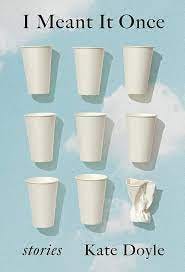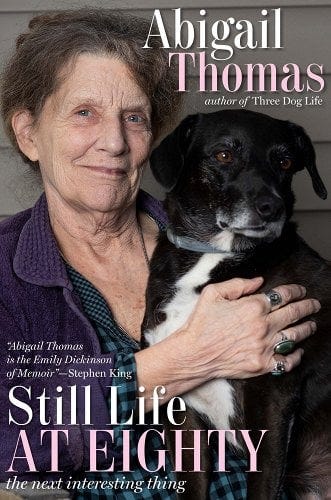THINGS THAT GO (vroom vroom)
thoughts on publicity momentum influenced by my child's nerdy babies books
My son’s favorite book at the moment starts “Hey there Nerdy Babies, have you ever wondered about things that go?” (These days it’s either me telling him what each truck is called in Nerdy Babies: Transportation or yelling “HOOOOONK” and reciting the delectable poetic sequence of Little Blue Truck—two books I could read aloud in my dreams).
And you know what, I do often wonder about things that go (and go and go and go).
This week, for example, I’ve been studying the publicity cycle of Wolfish: Wolf, Self, and the Stories We Tell About Fear by Erica Berry. I got so invested in the breadth and depth of the publicity of that book that I looked up the Flatiron publicist on LinkedIn and thought about sending him a message to pick his brain. I also often think about The Braiding Sweetgrass story and how much publishing is really one big surprise. No P&L sheet or editor can predict the news cycles, reading tastes, and camp mentality of social media memes and hot takes three years in advance (which is why we get a lot of books that are bet on by the success of what came before them—and why comp titles will never die their slow, unruly death—at least in today’s publishing arenas). Another newsletter will be about when is weird too-weird for big publishing, but that would completely throw me off here.
Publishers are surprised all the time, but they’re also funding books that they want to be successful, and the more money, the more anticipated lists. Erica Berry’s deal announcement tells me that her book was destined a success. It sold at auction, NA rights (publishers will fight for World), arguably sold by one of the best (and oldest) agencies in the US (which does in fact set a writer up for success), and sold UK at auction alongside the US sale.
It was worth some money is what I’m saying, but that doesn’t actually explain the rabid (had to!) success of the book’s publicity. I literally see it everywhere—every platform, everything you could want for a book, happening in live action on my Twitter feed and wherever I search for books. Here is where I am going to make an argument for momentum, but first, some research.
Something that gives a book a big boost of momentum, practically a guarantee that it’ll be reviewed across industry outlets is a star from Kirkus, Booklist, or Publisher’s Weekly. (I do believe Kirkus is a scam, but it’s a scam that’s working for them) Wolfish got a typically thorny Kirkus review (even the title isn’t doing any favors here). I actually couldn’t find the Publishers Weekly review, but Booklist and Library Journal read pretty glowing—you love to see a comparison to the one and only Mary Roach. There are, however, no stars handed out here.
My next thought is that Erica Berry herself, after years of writing, is connected to a lot of great editors. She brought platform to her publisher. And there’s proof here with the amount of national news coverage—Los Angeles Times, Washington Post, The Atlantic, Vulture, Salon, Financial Times, plus more. Her hometown of Portland also deeply supportive with reviews in the major paper and a conversation on KATU. What’s interesting about this, and I can’t tell this from the outside, but her radio coverage didn’t really start amping up until recently (the book came out February 21st, 2023), so either the programs are booked and busy or they suddenly felt the same thrill I feel about the book—the momentum, the picking up speed, the thing, as the children’s books say, that goes.
And I think momentum is the most curious thing about book publicity. If you can get the right media hit at the right time, the right client at the right time in the zeitgeist cycle, or the right angle at the right time—you can surprise a publisher with a hit. We had this happen with Anne K. Yoder’s The Enhancers. It had the trifecta swirl of healthcare, girldom, technology and once it appeared on a Nylon list, it was suddenly on every list. (I truly think Anne might be on tour for the rest of her life). Amy Fusselman’s The Mean$ got a Kirkus star which made People Magazine and Good Morning America easier gets.
I can tell you with the prediction of my crystal ball you’re about to see KB Brookins’ Freedom House everywhere. From the inside I know what’s coming, but I can also tell you from what’s been—editors will be stealing ideas from the lists (Vogue! Buzzfeed! Feminist Book Club!) that have already come out. If you think most anticipated lists, (& most buzzed about books) aren’t often regurgitated from each other, I don’t know what content & copy planet you’ve been avoiding, but I’d like to move where you are. (To a planet where writers are paid again!) My least favorite lists, for the record, even though lists aren’t my favorite thing anyway, are the ones that say “based on Goodreads statistics” or “based on Amazon reviews / sales / whatever whatever.” BLEH.
This is a bit of why book publicity starts early and starts fierce. And another way it advantages the big guys—they have the trajectory and longevity to start their publicity (though they rarely do) on a long, long, long lead timeline. And we (me?) use those early hits to cause momentum.
One of the things I always fretted over as an agent was having a reason to follow-up with editors about my books on submission. I’d always have a plan for placing something for a client so I had a reason to follow-up. I was (all four years) early in my career so I had a lot to prove, editors weren’t just going to take me seriously. I read the news until it made my eyes bleed to see if I could finagle a connection between the book on submission and a huge news story (same for socials—if everyone is tweeting the same phrase / meme / thing, I tried to use it to sell my books and authors). I use the same practice as a publicist. Obviously, I’m not sending weekly follow-up emails because I would hate me too, but I do like to have reasons to follow-up semi-regularly (every couple of months usually). Pop-in with a reminder like a mother in the movies. (Like my mother, let’s be real, hi mom! She’ll be in the comments, I already know.)
It also gives me a gauge on folks that completely missed my first correspondence. As an anal retentive inbox zero person, if I miss your email I had the flu or I’m consciously avoiding it because I’m a weird-o, but with regular follow-ups I can see the larger landscape of what’s happening for a book, or feel the terrible unease of NOTHING IS HAPPENING AND I NEED TO PANIC.
This is to say if you’ve ever responded to my follow-up with something like “please pester” (I’m looking at you Alysia Sawchyn), I love you. I truly wrote in my last email her way, “Sorry to pester you, but I wanted to check on this one. It feels Rumpus specific, so like a bad break-up, I can't move on.” Thank you for being you.
ANYWAY.
What I’m saying is, get in early, and get in hot. I’ll admit my initial pitches for books aren’t (… ever?) my strongest pitch. Usually they go through revolving iterations and I land on something that feels genuinely ecstatic. A lot of the larger publishing houses who have money to throw at galleys write long galley letters that they send to a large network of folks (PR lists) but Zoe and I are both more DIY (crafty?) and revise our pitches hard and often. This isn’t a judgment on one way is better, we just feel like having multiple pitches (I’m talking like perhaps 20 by the end of a campaign) helps us hit more angles—short pitches, long pitches, conversational, specific to one theme of the book or aspect of the story, fit to a certain audience etc, etc.
We keep color-coded campaign timelines that if anyone saw I would probably be horrified by the level of intensity, but it’s FINE, and we always pitch long-lead first (like everyone). WHICH MEANS that the national media is probably getting that early pitch and follow-ups AND momentum give me an excuse to tweak the messaging. To try a new thought or a new angle.
For instance, I love my pitch for Kate Doyle’s forthcoming story collection I Meant It Once (I secretly think Kate wrote this book for me—I’m the ideal messy quarter-life-crisis reader), but I wrote in my proposal to Kate about how the collection is a great portrayal & representation of “calm down culture” on American girlhood. In essence, no matter what stage of girlhood to womanhood—women are constantly told “stop crying, calm down, pull yourself together, be quiet,” etc etc, and I haven’t figured out how to include that in the actual pitch. But when I do—earth, wind, and fire.
And hey, if you love Melissa Bank—like you’re someone who grew up on Girl’s Guide to Hunting and Fishing, this one is for you.
I do think, with this newsletter as evidence, momentum can come from a lot of different sources. You can write a viral poem that becomes a heartbreaking memoir with another viral excerpt in The Cut (yes, Maggie Smith!). You can get a star from the industry mags. You can get THE blurb from THE writer of the moment. You can have a news cycle angle or lucky timing or a cultural conversation swirl. You can get an unexpected feature because someone *important* simply loves the book. You can have a great publicist who just GETS the book, or fantastic word of mouth from buyers and booksellers. You can have the deal announcement of the century (I’m looking at you Trellis Literary).
But you have to have something to kick the rest of the things in gear. And sometimes, to the chagrin of my deep-seated anxiety, some books are a slow burn. We could get into why (and why that’s okay) because they’re cultural objects and not wee capitalist machines, but that’s another day, folks.
Give yourself and your book a reason to follow-up and follow-through. It isn’t impossible, I promise, but it is mostly not inevitable without a strong push. As the Nerdy Babies say, “The whole world is on the move” so SQUEAK THOSE WHEELS!
As always, the Pine State calendar of events lives here. Request books for review & interview & feature here, add yourself to our reviewer list here, and buy our books here! You can also contact us through our website, Pinestatepublicity.com.
And if this week, you’re in the mood for a truly wonderful author conversation—watch Abigail Thomas & Beth Kephart chat here! Then, buy Abigail’s latest book STILL LIFE AT EIGHTY.
If instead of watching, you want to read something slow and savory, might I recommend two essays by John West, one on the craft of the literary fragment in memoir (Literary Hub) and another on miracles and bearability (Comment Magazine). Then, buy John’s book LESSONS AND CAROLS.
And if watching and reading are both out for you, THIS brilliant audio conversation with Eugenia Leigh and Alison Stewart on WNYC’s All of It is a must-listen! Then, buy Eugenia’s book BIANCA.












Of course I will comment. Your mind, and all the directions that it goes and goes, never fails to amaze me. Your constant love of books and all the effort that goes into creating them, will always lead you down the right path with publicity. I occasionally, when you were down, told you to put on your big girl panties. To my delight you immediately did just that. Keep up the good work.